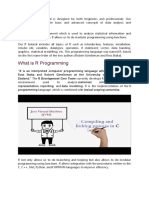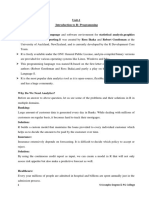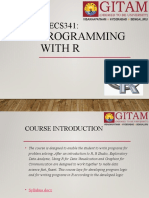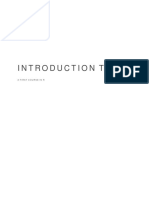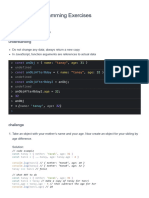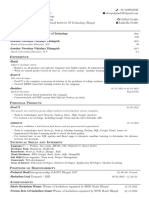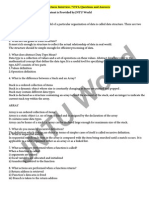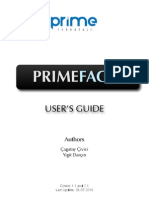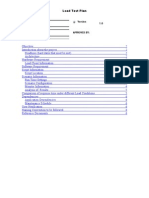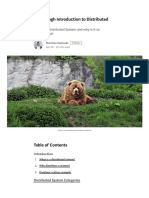MODULE 2
2.1 WHAT IS R?
Hsurrounding
ave you ever felt overwhelmed by the mountains of data
us? Numbers, gures, and trends ood our daily
lives, from social media analytics to scienti c research.
But what if there was a way to unlock the hidden stories
within this data? Enter R, a powerful programming language
that's become a cornerstone of data science.
“R is a language and environment for statistical
computing and graphics. It is a GNU project which is
similar to the S language and environment which was
developed at Bell Laboratories (formerly AT&T, now
Lucent Technologies) by John Chambers and
colleagues. R can be considered as a different
implementation of S. There are some important
differences, but much code written for S runs
unaltered under R.”
Unlike general-purpose languages like Python or Java, R
is a specialist. It's speci cally designed for statistical
computing and data visualization. Think of it as a translator,
transforming raw data into a language we can understand.
“R provides a wide variety of statistical (linear
and nonlinear modelling, classical statistical tests,
time-series analysis, classification, clustering, …) and
graphical techniques, and is highly extensible. The S
language is often the vehicle of choice for research in
statistical methodology, and R provides an Open
Source route to participation in that activity.”
Page 26 of 77
fi
fi
fi
fl
� But why is R such a crucial tool in the data science
toolbox?
Here's what makes R stand out:
✓ Statistical Powerhouse: Imagine needing to perform
complex calculations to understand customer behavior or
predict future trends. R boasts a massive library of built-in
functions for statistical analysis, allowing you to tackle
everything from intricate linear regressions to in-depth
time series forecasting. It's your one-stop shop for
statistical heavy lifting.
✓ Visualization Champion: Data may speak volumes, but
sometimes a well-crafted visualization speaks even
louder. R excels at creating informative and visually
appealing charts and graphs. Want to present complex
ndings in a way that's clear and impactful? R has you
covered, allowing you to transform numbers into
compelling visuals that tell a story.
✓ Open-Source Advantage: One of the biggest perks of R is
its open-source nature. This means it's free to use and
modify, fostering a vibrant community of developers who
constantly contribute new packages and functionalities.
Think of it as a constantly evolving toolbox, always
expanding to meet the ever-changing needs of data
science. In short it is FREE!!!
Now, some might say that R has a bit of a learning curve.
Its syntax can appear quirky at rst glance, and unlike some
user-friendly software, it requires you to write code to get
things done. But here's the good news: the payo is well
worth it! The exibility and power R o ers surpass many
user-friendly alternatives.
Page 27 of 77
fi
fl
fi
ff
ff
� So, what does mastering R hold for the future?
Here are some exciting possibilities:
✓ Career Opportunities: Data science is a booming eld,
and pro ciency in R is a highly sought-after skill. By
mastering R, you'll open doors to exciting career
opportunities in various industries, from nance and
marketing to healthcare and scienti c research.
✓ Problem-Solving Prowess: R equips you with a powerful
lens to analyze and interpret data. This translates to a
valuable problem-solving skillset, allowing you to tackle
complex challenges in any eld that relies on data-driven
decision making.
✓ Continuous Learning: The open-source nature of R
ensures you'll always be at the forefront of data science
advancements. The ever-growing community and new
package developments will keep you engaged and
constantly expanding your knowledge base.
So, whether you're a seasoned data scientist or just
starting your data exploration adventure, R is de nitely worth
considering. With its vast capabilities and supportive
community, it can be your gateway to unlocking the secrets
hidden within your data.
Page 28 of 77
fi
fi
fi
fi
fi
fi






